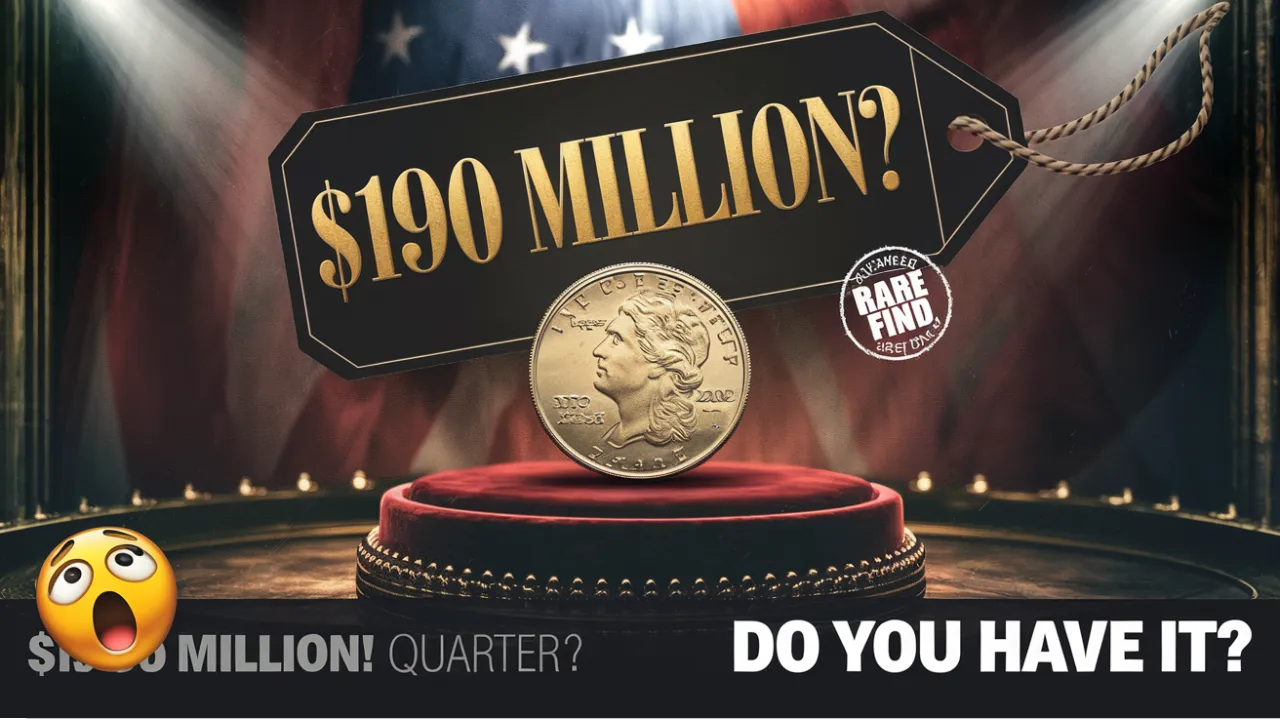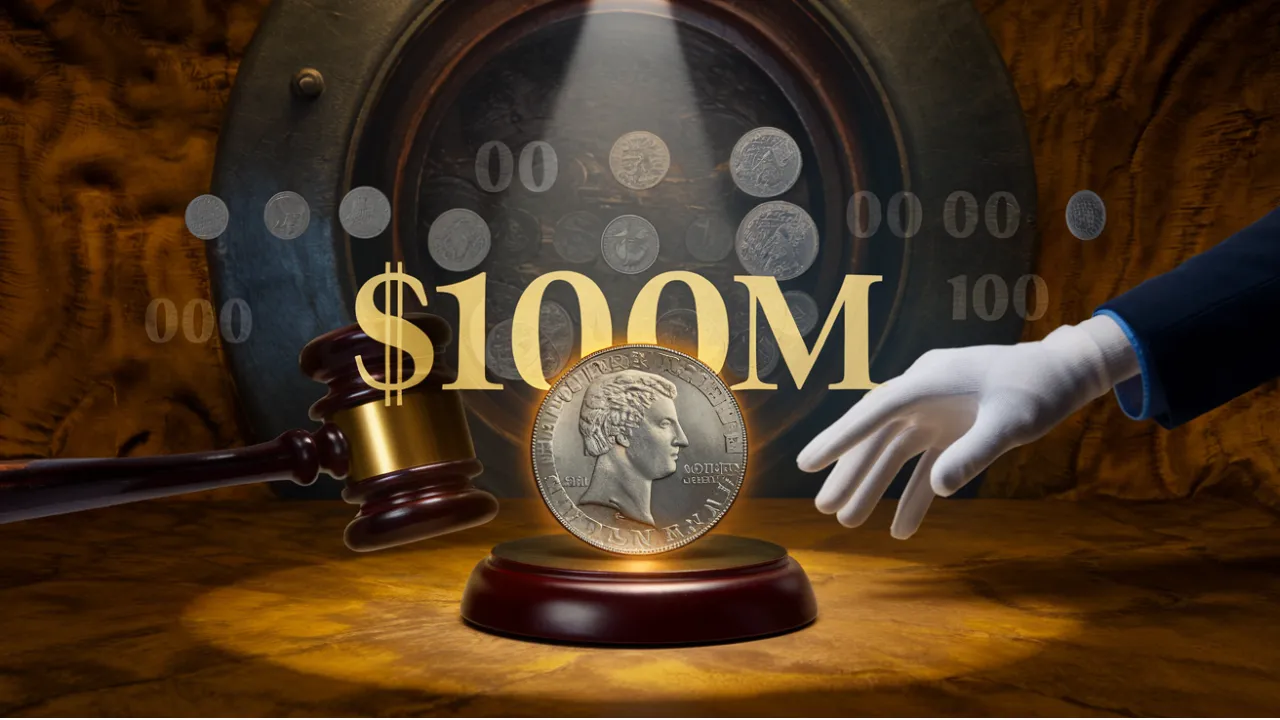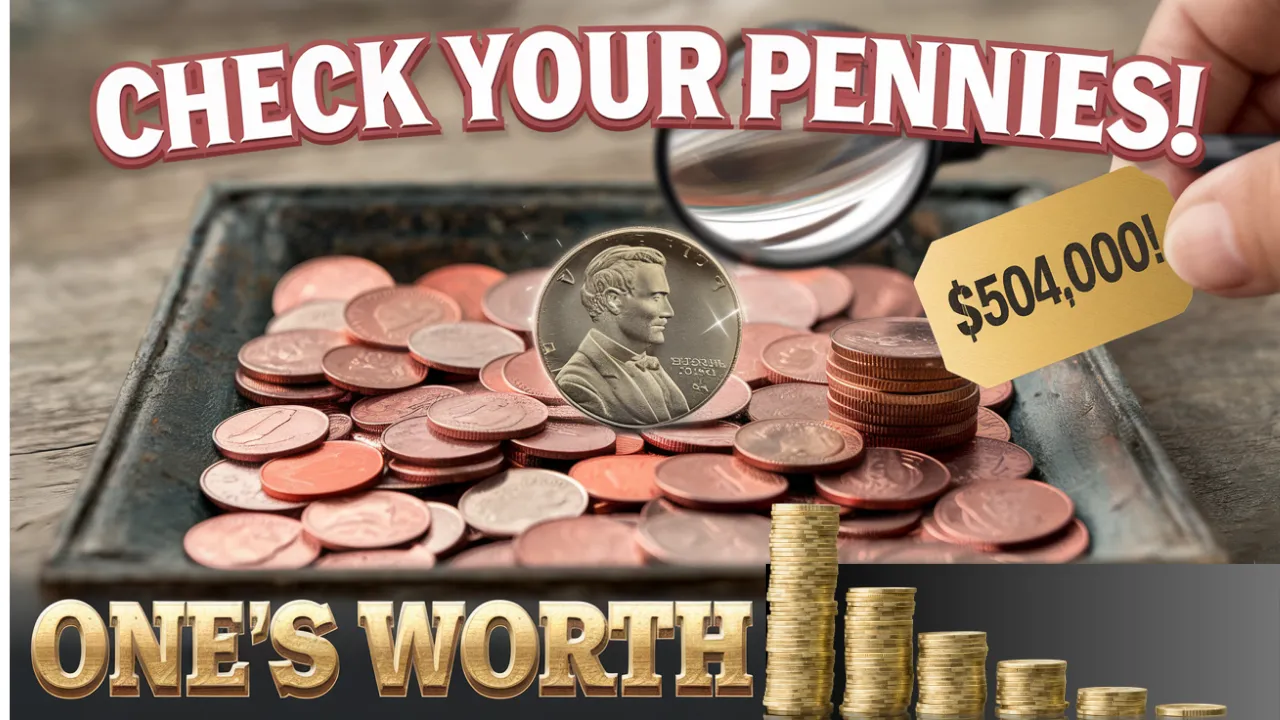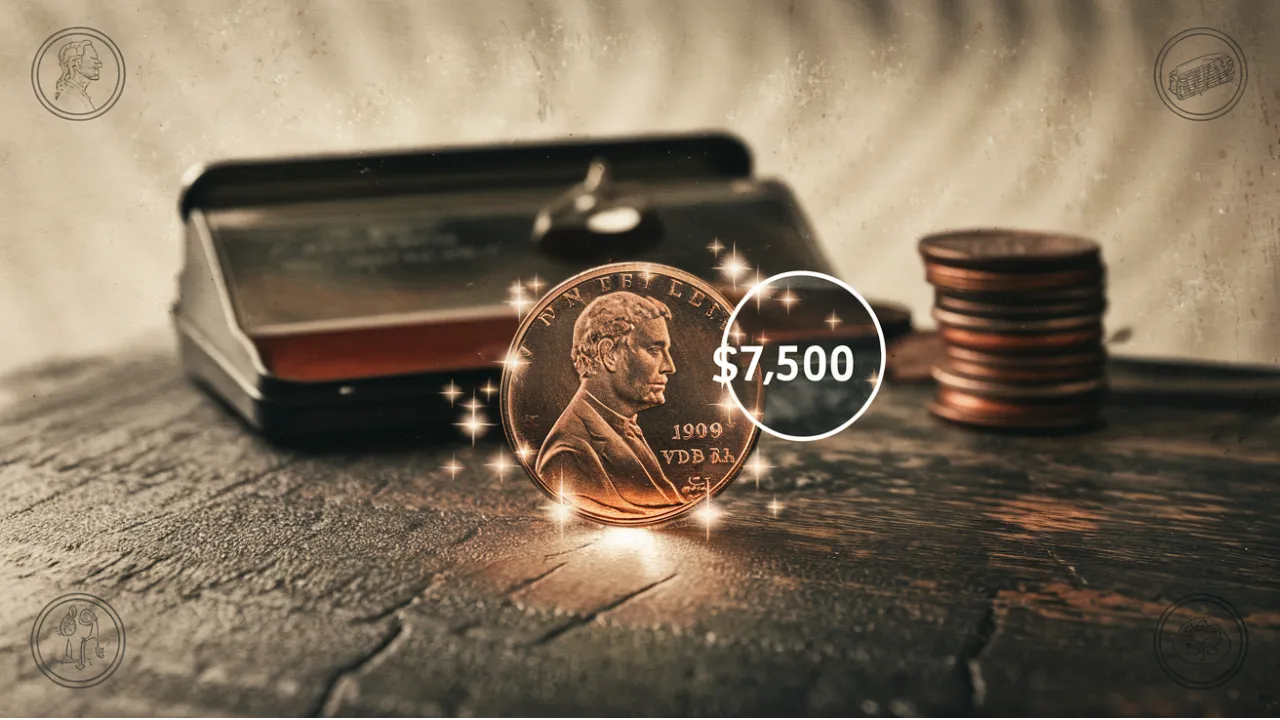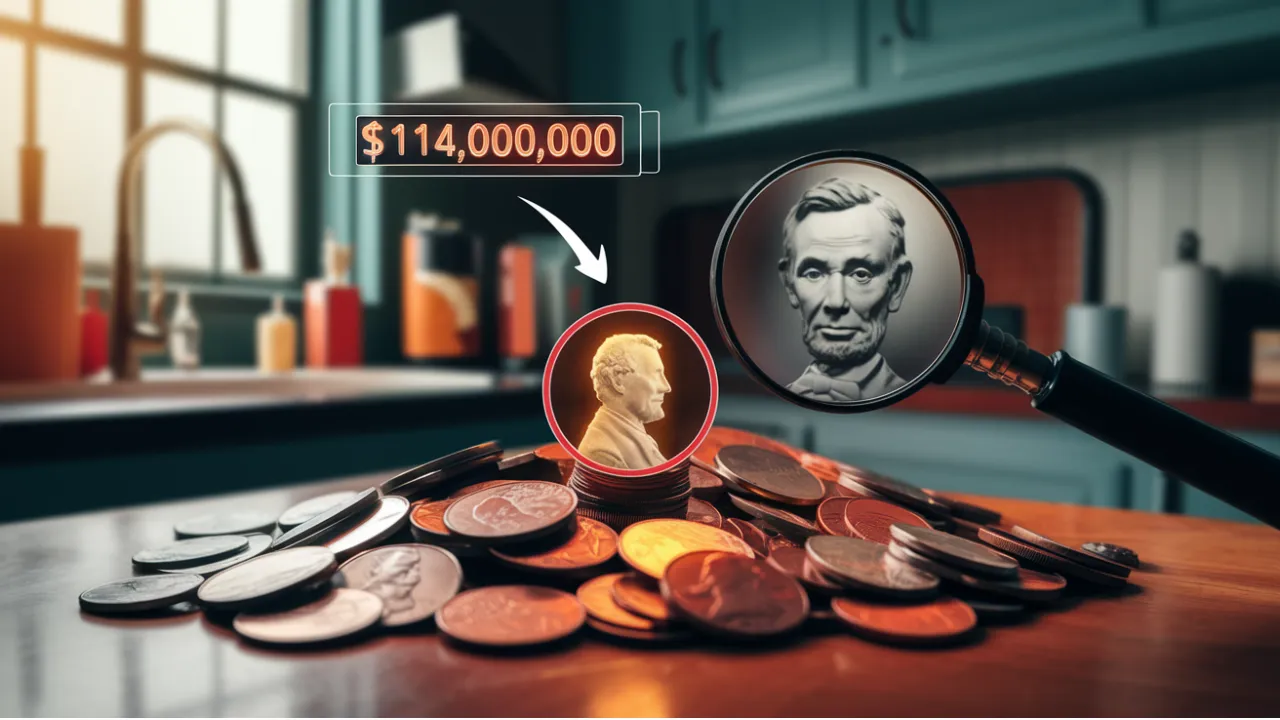The Lincoln: The 190 million wheat penny has become a legend in the world of coin collecting. With a potential value that could change your life, the idea of finding this rare penny in everyday pocket change is enough to spark anyone’s curiosity. But what makes this particular Lincoln Wheat Penny so valuable, and is there a chance it’s still out there waiting to be discovered?
This article dives into the fascinating history of the Lincoln Wheat Penny, explores the factors that make certain pennies worth millions, and provides tips on how to spot a rare coin in your own collection. Whether you’re a seasoned collector or just someone who’s curious about hidden treasures, this guide will help you understand what makes this penny so special.
Overview Table
| Key Information | Details |
| Coin Name | Lincoln Wheat Penny |
| Potential Value | $190 million |
| Design | Abraham Lincoln’s profile on the front, wheat stalks on the back |
| Years Minted | 1909 to 1958 |
| Why It’s Valuable | Minting errors, rare materials, limited supply |
| Rare Varieties | 1909-S VDB, 1914-D, 1922 No D, 1943 Copper Penny |
| How to Test Material | Use a magnet; copper pennies won’t stick |
| Verification | Professional grading services like PCGS, NGC |
| Possible Locations to Find It | Pocket change, piggy banks, old coin collections |
The History of the Lincoln Wheat Penny
The Lincoln Wheat Penny was introduced in 1909 to mark the 100th anniversary of Abraham Lincoln’s birth. Designed by Victor David Brenner, it became the first U.S. coin to feature a real historical figure. The obverse side shows Lincoln’s profile, while the reverse side depicts two wheat stalks, symbolizing prosperity and the nation’s agricultural heritage.
Minted until 1958, the Lincoln Wheat Penny was replaced in 1959 by the Lincoln Memorial design. While most Wheat Pennies are common and worth only a few cents, certain rare varieties are highly sought after by collectors. Among these rare coins is one believed to be worth a staggering $190 million, making it one of the most valuable coins ever rumored to exist.
Why is This Wheat Penny Worth $190 Million?
The extraordinary value of the 190 million wheat penny comes from its extreme rarity and unique characteristics. Several factors can make a coin worth millions, including:
- Minting Errors: Mistakes during production, such as double printing or missing mint marks, make certain coins one-of-a-kind and highly collectible.
- Material Composition: During World War II, most pennies were made from steel due to copper shortages. A 1943 copper penny, made by mistake, is incredibly rare and valuable.
- Limited Supply: The fewer coins of a specific variety that exist, the higher their value. Collectors are willing to pay astronomical amounts for rare finds.
Experts believe that the coin rumored to be worth $190 million may be a one-of-a-kind minting error or a prototype coin that was never meant to enter circulation. Its rarity and historical significance make it priceless to collectors.
Is It Possible to Find This Penny in Circulation?
Believe it or not, rare coins often show up in regular circulation because many people don’t recognize their value. Valuable Wheat Pennies have been discovered in pocket change, old piggy banks, and forgotten coin collections.
To increase your chances of finding a rare penny, pay attention to the following details:
- Date and Mint Mark: Look for specific years like 1909-S VDB, 1914-D, 1922 No D, and the 1943 Copper Penny.
- Material and Color: Use a magnet to test your 1943 penny. If it’s copper and doesn’t stick to the magnet, it could be worth a fortune.
- Minting Errors: Check for double letters, missing elements, or off-center prints. These flaws increase a coin’s value.
How to Identify a $190 Million Wheat Penny
If you think you’ve found a rare 190 million wheat penny, follow these steps to verify its authenticity:
- Inspect the Date and Mint Mark: Make sure the date and mint mark match known rare varieties.
- Use a Magnet Test: Copper pennies won’t stick to a magnet, so if your 1943 penny doesn’t stick, it might be a valuable copper version.
- Look for Printing Errors: Use a magnifying glass to spot details like doubling of letters or missing features.
- Compare It to Known Varieties: Use online resources or coin guides to compare your penny to verified rare coins.
Where to Search for Rare Wheat Pennies
- Your Pocket Change: Always check the pennies you receive in change, as valuable coins can still appear in everyday transactions.
- Piggy Banks and Coin Jars: Many rare coins have been discovered in piggy banks and jars that haven’t been emptied in years.
- Inherited Coin Collections: If you’ve inherited a coin collection, it’s worth examining each penny carefully.
- Coin Rolls from Banks: Some collectors buy rolls of pennies from banks and search through them, hoping to find rare coins.
How to Get Your Penny Verified and Sold
If you believe you’ve found the legendary 190 million wheat penny, it’s essential to get it authenticated and appraised. Here’s how:
- Consult a Professional Numismatist: Take your coin to a reputable coin expert who can examine and verify its authenticity.
- Use a Grading Service: Companies like PCGS (Professional Coin Grading Service) and NGC (Numismatic Guaranty Corporation) can officially grade your coin, which increases its value.
- Sell Through an Auction: Rare coins often fetch the highest prices at auctions, where collectors bid against each other to secure valuable items.
List: Rare Lincoln Wheat Pennies That Could Be Valuable
- 1909-S VDB: Known for its low mintage and designer initials, this penny is highly collectible.
- 1914-D: A rare Denver Mint penny with limited production numbers.
- 1922 No D: A minting error where the Denver Mint’s “D” mark is missing.
- 1943 Copper Penny: One of the most valuable Wheat Pennies, made by mistake during the steel penny era.
FAQs
1. Why is the 190 million wheat penny so valuable?
Its extreme rarity, combined with unique minting errors and material composition, makes it highly desirable to collectors.
2. How can I check if my Wheat Penny is rare?
Look at the date, mint mark, and material. Use a magnet test and inspect for minting errors.
3. Can I still find a rare Wheat Penny in circulation?
Yes, many collectors have discovered rare Wheat Pennies in their everyday change or old collections.
4. Where should I sell a valuable Wheat Penny?
Sell it through reputable auction houses, coin dealers, or online platforms dedicated to coin collecting.
5. What should I do if I think I’ve found the 190 million wheat penny?
Have it authenticated by a professional numismatist or grading service like PCGS or NGC. If verified, consider selling it at an auction.
Final Thoughts
The possibility of discovering a 190 million wheat penny continues to inspire collectors and treasure hunters worldwide. While such a coin is incredibly rare, history shows that valuable Wheat Pennies have been found in everyday places. So next time you receive change, take a closer look—you might just have a fortune hiding in your pocket. If you enjoyed this article, leave a comment, share it with friends, or explore more about rare coins and hidden treasures!
